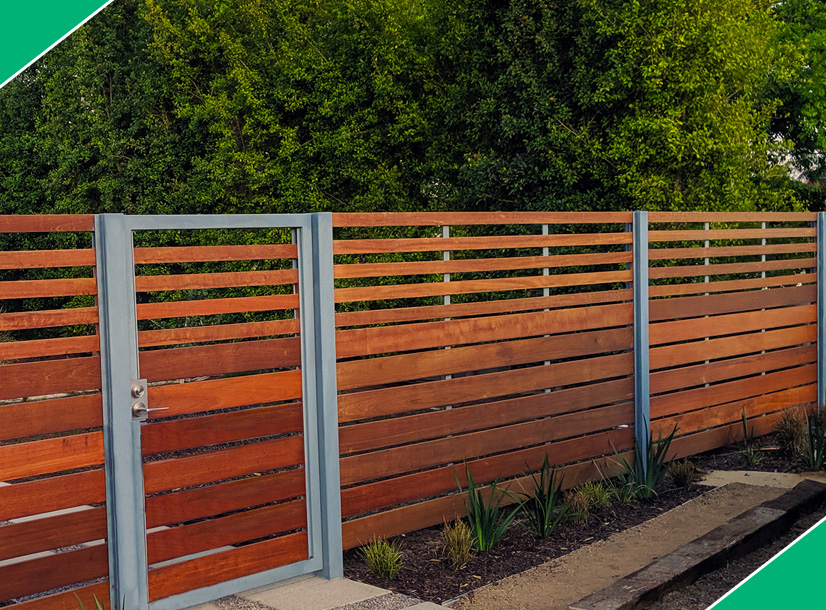A new fence is a serious quality of life upgrade for any homeowner. When a fence acts as a division between properties, however, it also affects the quality of life of your immediate neighbors. Whether that effect is positive or negative belongs to the realm of fence building etiquette.
Restrictions
An important aspect of fence building etiquette is knowing the laws that govern how you can build your fence. There are likely state, county, and local laws that restrict the type of fence you can build in your yard. In most counties the height limit is 4 feet in the front & 6 feet in the back of the house. Corner lots commonly have a special set of rules, as their fences can reduce visibility when driving around corners. The style, height, and what your fence is made of can also be subject to the rules of a homeowners association if you happen to be a part of one.
Communication
When you’re planning to put up a new fence it’s a good idea to get your neighbors thoughts beforehand. It’s not a legal matter, like the requirements above, but it is considered courteous. Bringing fencing plans to your neighbor in advance also reduces the likelihood of any legal troubles arising.
Have a few things laid out before you approach your neighbors. If your fence is going to be built along property lines, know exactly where it’s going to go. The locations of your property lines are mapped out on your house’s plat, a document that can often be found by contacting your city council. A land surveyor can be hired to create a new one if you can’t get your hands on the document.
In the case where you don’t approach your neighbor beforehand, and tensions begin to arise, communication is still your best friend. For example, take the case where your neighbor has a grievance about a fence you are constructing. They say it will obscure their valuable view. Work towards a compromise by talking to them about which part of the fence is offensive and how they would like it changed. Some possible solutions are reconstructing part of the fence, all of the fence, or seeing if your neighbor would take on some of the cost of rebuilding.
Fence Etiquette Tips
- Fences are often established a foot or two behind property lines, as to avoid legal entanglements.
- Choose a fencing design that best fits your neighborhood. A fence design that’s the right fit will increase the value of your property and your neighbors.
- Keep your fence clean on both sides. This will benefit the appearance of your home and the longevity of your fence.
Good Neighbor Fences
Good neighbor fences are a cornerstone of fence building etiquette. Traditional wood fences often have a good side and a bad side. When building a fence of this style it’s customary to put the bad side inward. Good neighbor fences remedy this by having the same appearance on both sides. In California there is even a good neighbor fence law that states “adjoining landowners shall share equally in the responsibility for maintaining the boundaries and monuments(the fence), between them.” This law relates more to splitting the cost than the style of the fence, but the principal is the same.Modern styles such as a horizontal wood planks, gabion walls, and metal screens are examples of good neighbor fences. Check out some of our case studies for inspiration on your next fencing endeavor!


